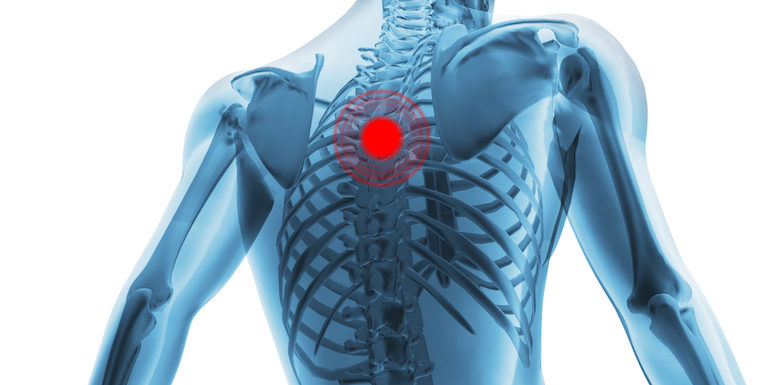From the yoga instructor to the office worker to the stay-at-home parent, our daily activities are possible because of our backs. The spine itself is a remarkable structure of the body. It is strong, but also flexible. It provides mobility, but it also helps protect our nerves. By understanding the anatomy of the back and spine, we can better understand how it works and, for many, how it can lead to back pain.
Spine anatomy 101
The back, as we think of it, is a network of bones, muscles, nerves, and other body tissues that reach from the neck to the pelvis. Within it is the spinal column. The spinal column is a major support structure of the body. It is made of up individual vertebrae, or bones of the spine, that then link together to create the flexible support needed by the body. In between each of these vertebrae are pads of cartilage (known as intervertebral discs) that help cushion the spine, act as shock absorbers, and contribute to overall flexibility. Ligaments and muscles are also attached to the spinal column that provide strength and mobility.
There are four regions of the spine:
- Cervical: Portion of the spine that makes up the neck and supports the weight of the head
- Thoracic: 12 vertebrae that make up the spinal column in the upper back and help protect the heart and lungs
- Lumbar: Area of the spine most responsible for mobility and the weight of the torso
- Sacrum: Portion of the spine that connects the spinal column to the pelvis
Within these four regions is the spinal cord. The spinal column is responsible for protecting this cord of nerve fibers that transmits information from the different areas of the body to the brain. In between the spinal column itself and the spinal cord is a clear fluid called cerebral spinal fluid that further protects the nerve tissues from damage.
Causes of back pain
Now, how do these structures lead to back pain? There are anatomical reasons why up to 84% of adults will experience some form of back pain over the course of their lifetime.
Neck pain in the cervical portion of the spinal column is most often caused by a strain in the muscles or ligaments of the spine or a pinched nerve. Injuries to the thoracic area of the spine are relatively rare, but can occur with damage to the shoulder muscles or joints in the upper back. Pain in the lumbar region of the spine is the leading cause of back pain due to its mobile and load-bearing nature.
Most people experiencing lower back pain suffer because of muscle strains or trauma to other soft tissues in the low back. Pain in the sacrum region can often be ascribed to issues with the joints, with pain in this region much more common in women than in men.
Have you ever experienced back pain? How does the anatomy of the back help you better understand your pain?


